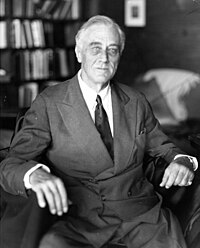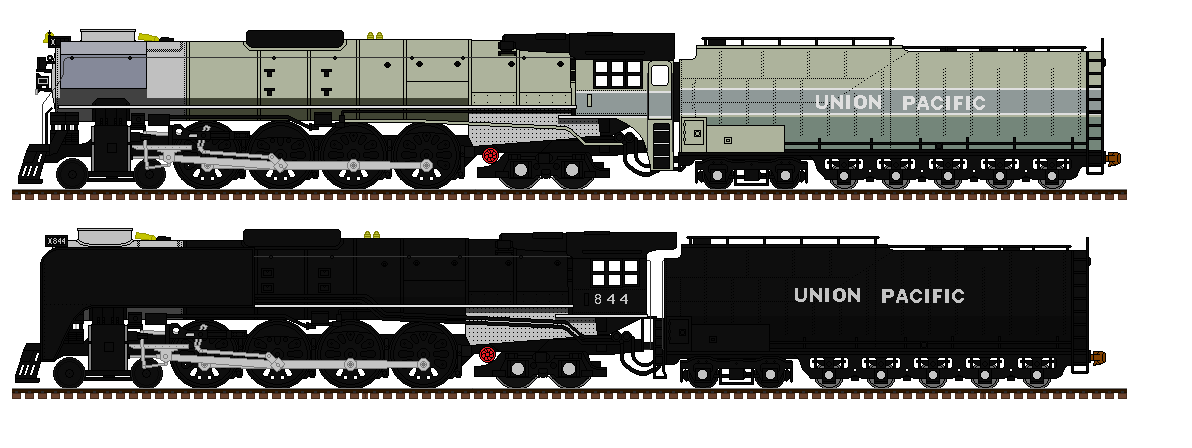After the Second World War, the veterans were determined to find places to live. Often wanting larger homes out in new suburbs. This also coincided with the rise of the automobile in the nation. Which left many trolley lines, and railroads in general, nervous about what may happen to them. But the Trollies of America were not about to go down. So many of them, with aid from sympathetic private investors and several urban planners made a series of different solutions.
The big one however, was designed to coincide with the growth of the suburb. Under these new plans, trollies would design the suburb to have all the houses with sidewalks and neighborhoods. But then center each bloc of houses alongside a commercial center with churches, stores, theaters, a park or two, public pools, and so on. Most importantly, however, was the Trolley Station that all other activity radiated from. It was here that the trollies of America showed how they could still be relevant by being the jam-free alternative to the automobile even in spite of having less freedom. That said, car culture did hack into its services for a little bit. Though the eventual discovery of traffic jams led to people flocking to the trolley again. Allowing the systems in Los Angeles and Chicago to make a massive comeback in terms of passenger service.
Pacific Electric (Los Angeles)
The administration of Los Angeles Mayor Fletcher Bowren hired consultants to make proposals to meet the postwar transportation needs of Los Angeles. PE was naturally a major player in this operation plan. They sought to work with the city to build into downtown Los Angeles, and it was agreed that the PE rails would be included into new freeway construction. PE offered plans whereby the PE rails would be incorporated into the center of the new freeway. The rails would leave the freeway at Glendale Boulevard via an underpass and head directly to the Subway Terminal. This plan was supported because it would be of fantastic convince for LA commuters.
A photo of the line into Hollywood. A few years before the entrance into downtown was finished.
Meanwhile, upgrading the rest of the original system took place throughout the post-war era. Including the completion of the Northern Division, with other major portions of the Eastern Division being built. In many cases, the Eastern and Southern Divisions were instead extended to they could serve the then-upcoming suburbs. Though this was not as convenient as continued upgrades, it did at least mean PE could reach out to further revenue and customers. The passenger train fleet was also expanded to
Lake Shore Railroad (Chicago area)
Ever since the creation of the Lake Shore Line, the city of Chicago and the Lake Shore’s owners had been looking for more ways to possibly improve commuter transit. As the Pacific Electric system in California sought to expand for the sake of survival, the Lake Shore made similar movements. Expanding their system by having new suburbs be designed around them and possible depots. The Lake Shore couldn't reach everywhere, so what they also did was a series of collaborations with various bus routes to connect suburbs where the extensions were cost-prohibitive.
In accordance with these plans, there would be at least two additional subways for the Lake Shore Interurban. One dedicated four-track mainline would start from Millennium Station continuing the former South Shore route underground until the Armitage Station where it would either parallel or straddle over the existing elevated route. The other dedicated subway would be for the CA&E route, which would also be a four-track subway but two tracks would be for Rapid Transit cars and the other two strictly for the Larger Interurbans and freight movements. The tunnels and elevated right of ways for the Lake Shore would be built larger and stronger to handle both heavy freight movements for off peak hours and high speed EMUs powered by 1500v overhead wire, not 600v 3rd rail.

The Lake Shore Line was the first rail line in the US the use the Little Joe Electric locomotives. Later user of the design would include Pacific Electric, the Pennsylvania Railroad (who called them the VV1), and the Milwaukee Road. All of whom also used them for their heaviest freight services.
This project was going to take a very long time, and everyone involved knew it. So it was decided that the best course of action was to instead focus on lines that would bypass the Chicago area which had been proposed but not completed before the war. Namely from Mundelein to South bend via Wheaton, Chicago Heights, Crown Point, and Valparaiso. Not to mention numerous primarily freight line in Wisconsin. Including the complete bypass of the Lake Michigan Shore route from Milwaukee to Mundelein via Burlington, WI and Fontana, WI. However, electrification was soon found to be a massive expense for the railroad, so they instead ordered the first large sample of diesels. Whereas for electrified lines, the Lake Shore had long sought to replace the Milwaukee Road designs they appropriated. Eventually, the answer came in the former of several electrics that GE had built for an aborted order to the Soviet Union. These electrics, known as "Little Joes" after the then recently deceased premier Josef Stalin, were found to be perfect replacements for the EP-2s of Milwaukee Road designs. The next few years would see the original plan for the Lake Shore system be completed. With the appropriation of lines to various areas in Wisconsin going on. For this reason, diesels like the ALCO RS-3s would be purchased to service the new lines like the freight ones bypassing Chicago.
The subway in downtown did come to pass however, and it was started in March 1947. Work would continue for the next few years until June 1951, when the CA&E route's four-track main was finished. Shortly after, the Millennium Park upgrades were included in the mix by March 1952. Most of the subways would mainly be reserved for passenger rail however. As the freight lines were mainly relegated to the elevated tracks like the original Chicago loop lines. Mainly to remedy the issue of loading gauge and height that were posed by the freight engines and most rolling stock, which was getting to be more and more thank to the Lake Shore's role in shuttling freight out of the way of major bottlenecks.
New York also had its own improvements to its iconic subway at this time. But the changes would not happen until later enough to warrant its own page on the subject.
OOC: Special thanks to
@isayyo2 and
@Lucas.








